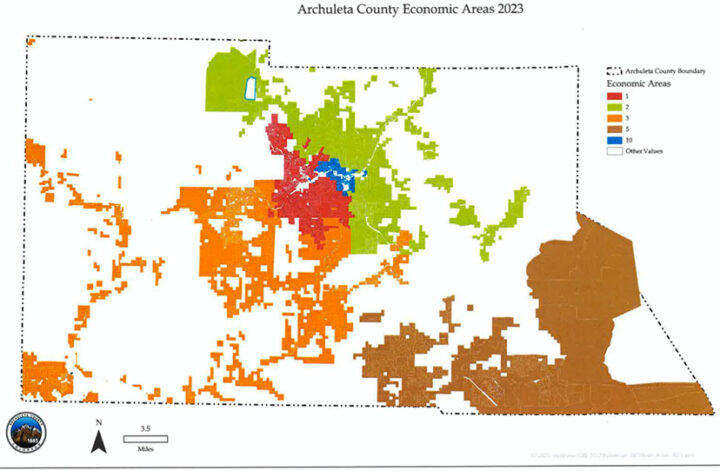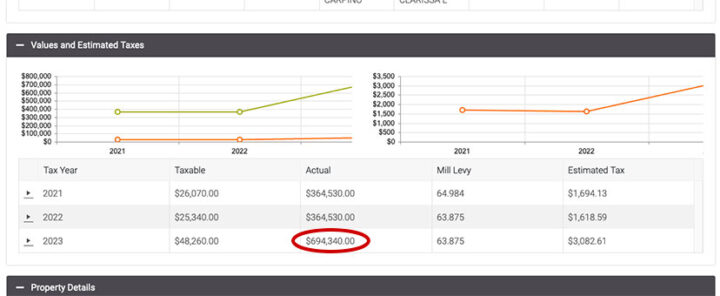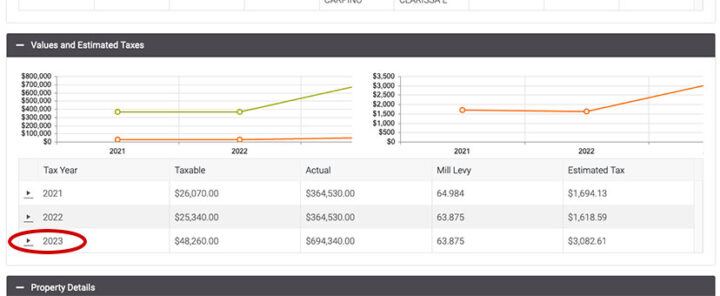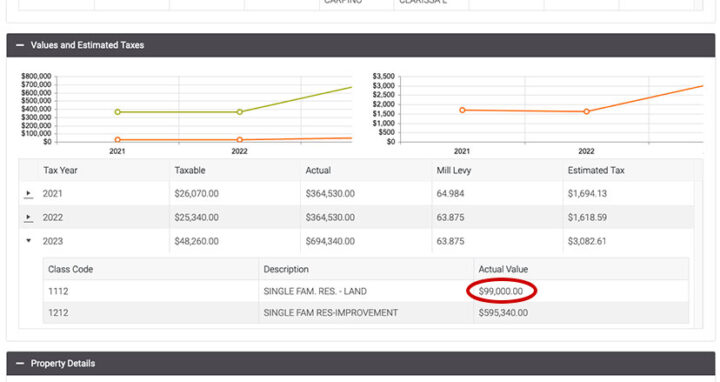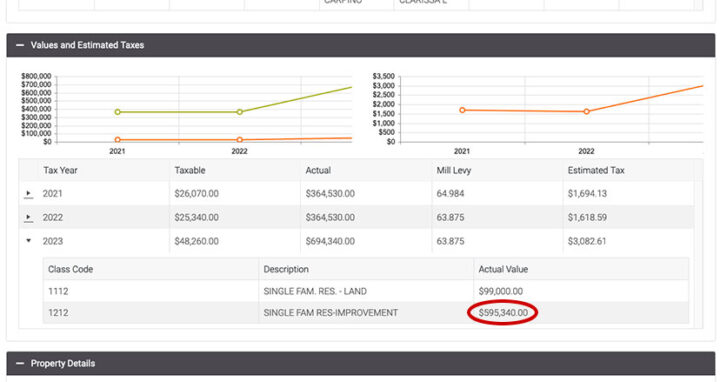Hi Bill,
Just wanted to let you know that after I made my protest to the county, I got a letter that drops my valuation by $94,000. So making the protest, with enough supporting documents, does pay off!
— Gary Hardin, Pagosa Springs
At their regular meeting on Tuesday, July 5, the Archuleta Board of County Commissioners decided against hiring real estate advisors to handle the 200-or-so property valuation appeals expected to be filed by unhappy property owners by the July 15 deadline.
Commissioner Warren Brown made a motion to hire some real estate experts, but could not get a second to his motion from Commissioners Veronica Medina and Ronnie Maez.
Thus, the motion died for lack of a second. So the appeals will be heard personally by the three commissioners, acting as the County Board of Equalization (CBOE). Certain taxpayers do not fully trust their County government, but it’s quite possible they trust the real estate industry even less.
Property owners who protested their valuation to the County Assessor by the June 8 deadline should have received a mailed response, last week, from the Assessor, either agreeing with the protest and stipulating a different valuation, or else denying the protest and upholding the original valuation.
I heard from my friend Gary Hardin last week, letting me know that his protest had been successful, and that the Assessor had agreed to lower his property valuation by about $94,000 — based on the comparable properties and documentation he had provided. He sounded happy with the results.
But it’s possible some of our Daily Post readers were not happy with the response they got from the Assessor.
The CBOE hearings will take place during the end of July and the beginning of August… if you appeal by July 15.
To help the CBOE in its appeal process, Assessor Johanna Tully-Elliot provided a nine-page overview of appraisal terminology and details about how her department figured the new valuations… and how the CBOE might wish to judge the validity of an appeal.
You can download that document here. The first four pages are “Terminology’ and the rest of the document includes charts that illustrate various adjustments made to property valuations based on neighborhood and structural characteristics.
The document includes maps of the “Economic” and “Neighborhood” areas that were used to adjust valuations.
As I understand the appeals process, the Assessor or her staff will have a chance to review your appeal before it is sent to the CBOE… and could conceivably adjust a property valuation prior to the appeals hearing, based on the information you provide.
Some property owners provided compelling evidence of an incorrect valuation when they filed their protest (as was apparently the case with my friend Gary Hardin, quoted above, for example.) I assume compelling evidence would include a sufficient selection of nearby property valuations (in a similar architectural category) to convince the Assessor’s staff of their mistake.
Which technically wasn’t a mistake. The Assessor uses a computer-driven mass appraisal system that necessarily overvalues some properties, and undervalues other properties. It’s legally up to the property owner — not the Assessor — to request corrections to their valuation, if desired.
“Compelling evidence” — for a property that includes a residential home — would likely be based on nearby homes of similar style and quality, with valuations significantly different from your own. You are allowed to present, to the CBOE, additional information that you did not include in your original protest. And ‘additional information’ would probably be a good idea, if your protest wasn’t convincing to the Assessor’s staff.
I shared some ideas about how to find “comps” (comparable properties) in a Daily Post series in late May. I’m repeating some of that information below…
If you go to the County Assessor’s web page, here, you can click the link called, “Property Records Search” in the left column.
You should land on this page:
Enter your name, or street address, or other pertinent property information, click “SEARCH”, and you will be sent to the next page.
In my case, I was shown the information about my house downtown:
Above “OWNERNAME”, you will find four buttons.
The “Property Report” button will generate a printable PDF including the same information displayed on this web page, plus a few additional details.
But it might not include all the information you will need to compare sales.
The second button, “Tax Information”, provides old property tax information. Not very useful.
What you are looking for is current information about your values, and your “comps”.
Thus, the fourth button, “Other Sales”, could be very important.
About 2/3 the way down the page, you will find your tax information for the past three years.
In my particular case, my property value has nearly doubled since June 30, 2020, in the Assessor’s opinion. And so, my estimated property tax also doubled.
The total value of my residential property includes Land and Improvements.
$694,340.
When you view your main page, the Land and Improvements are displayed as a single “Actual” value.
You will likely want to know the separate values — Land and Improvements — because you might find that the Land was properly valued, but the Improvements (house, garage, outbuildings, etc) were not. Or vice versa.
There is a little arrow just to the left of the “Year”…
…and when you click it, you can see the separate Land and Improvements valuations.
As we can see below, the Assessor defined my Land value at $99,000, for .86 acres in downtown Pagosa Springs.
The Improvements include a three-bedroom house, built in 1900… plus a detached garage (1950?) that’s been converted into an art studio… and a pole barn with no walls (also 1950?).
The Improvements are valued at $595,340.
How did the Assessor come up with these values? They weren’t simply pulled out of a hat. Supposedly, those values are based on sales of similar properties.
“Comps”. “Comparable Sales”.
How well did the Assessor hit the target?
The key to your further research is the “Other Sales”, at the top of your main page.
When you click this button, the Assessor shows you some properties, sold between July 1, 2020 and June 30, 2022, that the Assessor thinks were similar to your property.
In theory, the Assessor’s staff could come visit your property, and make an appraisal of its values based on their expert opinion. But this method is impractical, considering the number of properties (30,000?) that would have to be visited.
So the Assessor uses “comps” and a mass appraisal process.
Here is the first page of the sales related to my own property valuation, when I first open the page:
This first page contains links to 45 sales in Archuleta County. Not all of the sales were homes. Some of the sales shown are vacant property. But we recall that “Land” is valued separately from “Improvements”… so that might explain why the Assessor is including vacant land in related sales?
In my case, the properties shown on this first page are all listed as “2_Two-Story”. That’s the “Architectural Style”. Not a terribly descriptive designation, however, and not an ‘architectural style,’ per se. It’s more like a ‘building height’. Apparently, my house is related somehow to any home that is a ‘two story’ structure.
But the valuation of a home is ideally based on other factors beside how tall the building might be. The number of bedrooms and bathrooms, for example. The age of the house. Its condition. The neighborhood. Does it have water and sewer service? Electricity?
I can ask these questions, but truth be told, I’ve never protested my property valuation, in 30 years of living in Archuleta County.
My hat is off to those who took the time to ask for an accurate valuation.

